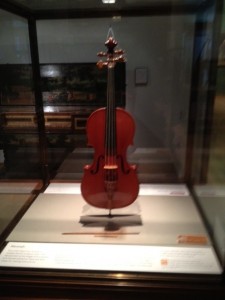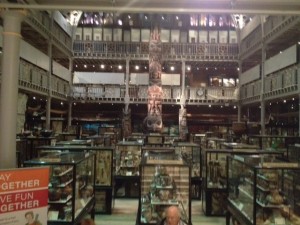Oxford Part II
Posted on November 1, 2012
Our trip to the UK hasn’t been all high culture. After all, we started by landing on Sunday and later that day making our way to the new Wembley Stadium to watch the Patriots play the Rams. The NFL in England? Sounds odd and I’m skeptical that there will ever be an expansion team in London, never mind a European league, but the annual NFL game is the fastest selling event at Wembley each year.
As we made our way there we saw hundreds of fans sporting NFL team jerseys. Patriot jerseys dominated and we assumed these were mostly Americans, but they were overwhelmingly British. Brits wearing the jerseys of the Bears, Dolphins, Giants (a fair number, the bums), a Jet or two (even worse), and even a Matt Cassell Kansas City Chiefs jersey. Really? Matt Cassell? How did they ever come to root for this full range of NFL teams?
We were mostly surrounded by English fans and they described the satellite and cable coverage they now get and were pretty knowledgeable about the game, though some of the penalty calls eluded them and there was often a delayed reaction to events. For example, an interference call results in a Pats first down on 3 and 2 and the American Patriots fans immediately cheer while the British fans take a moment or two to register what happens and then join in. They were all great company and the Pats dominated, so a wonderful night.
Leave it to Gronkowski to quickly become a fan favorite in the UK, first by spiking a microphone in a pre-game event and then by improvising a new touchdown dance based on “those Nutcracker dudes,” as he explained later. Very funny and the English fans ate him up, as do American fans.
On the other end of the culture spectrum, we today visited the Ashmolean Museum here at Oxford, the oldest public museum in Britain, founded in 1683. The archaeological collections were amazing and the recent renovations have produced a light filled, modern set of galleries. The Ashmolean is a terrific museum that draws on Oxford’s long esteemed work in archeology and was helped not a little bit by the imperatives of Empire. While the Egyptian, Greek, and Roman collections are the real strength of the museum, we all loved best the small gallery of musical instruments, gorgeous artifacts highlighted by the Stradivarius violin The Messiah. The name came from the owner long keeping it hidden, but bragging about it. Finally a friend quipped that the violin was like the Messiah, often discussed but never actually appearing. The name stuck.
 In contrast was the Pitt Rivers Museum, which we yesterday visited on campus. General Augustus Pitt Rivers might be seen as one of the founders of Anthropology and when he left his 20,000 artifacts to Oxford the terms of his will stipulated that the collection be left as organized and that Oxford would endow a permanent lecturer in Anthropology. The beauty of this Victorian Era museum (a wonderful steel and glass edifice with a sort of steam punk look) is that it memorializes a Victorian sensibility about the field, the organization of collections, and taxonomies that we have long abandoned.
In contrast was the Pitt Rivers Museum, which we yesterday visited on campus. General Augustus Pitt Rivers might be seen as one of the founders of Anthropology and when he left his 20,000 artifacts to Oxford the terms of his will stipulated that the collection be left as organized and that Oxford would endow a permanent lecturer in Anthropology. The beauty of this Victorian Era museum (a wonderful steel and glass edifice with a sort of steam punk look) is that it memorializes a Victorian sensibility about the field, the organization of collections, and taxonomies that we have long abandoned.
Because Pitt Rivers had much improved firearms for the British Army, he had a view of human culture as one of progress along a technological scale, so the collection is organized around areas like boats or musical instruments or weapons. The dim room (because a lot of what he collected would be sensitive to light) is jam packed with glass cases with everything from shrunken heads (a real hit with kids) to full size canoes and other boats. They give you a flashlight to better see and a magnifying glass to better read the small hand written notes that accompany items.
The museum was opened in 1884 in a period of Victorian optimism and belief in human progress. Cultures, in this mindset, existed on a continuum of progress and could be placed somewhere on the line of development. Thirty years later the carnage of trench warfare would deflate that optimism and blow up the myth of human progress. The Holocaust, use of the atomic bomb, preventable famines, assault on the planet, and ongoing racism, homophobia, misogyny, and religious fundamentalism of all stripes has forever debunked the myth that humanity actually improves through technology, science, or other drivers of “progress” and made the museum both more quaint and nostalgic.
The prefect antidote for those gloomy thoughts was scones and curdled cream at the Grand Cafe, the oldest coffee shop in England, founded in 1650 and mentioned by Samuel Pepys in his famous Diaries. Really, scones and clotted cream might be the ultimate comfort food.
